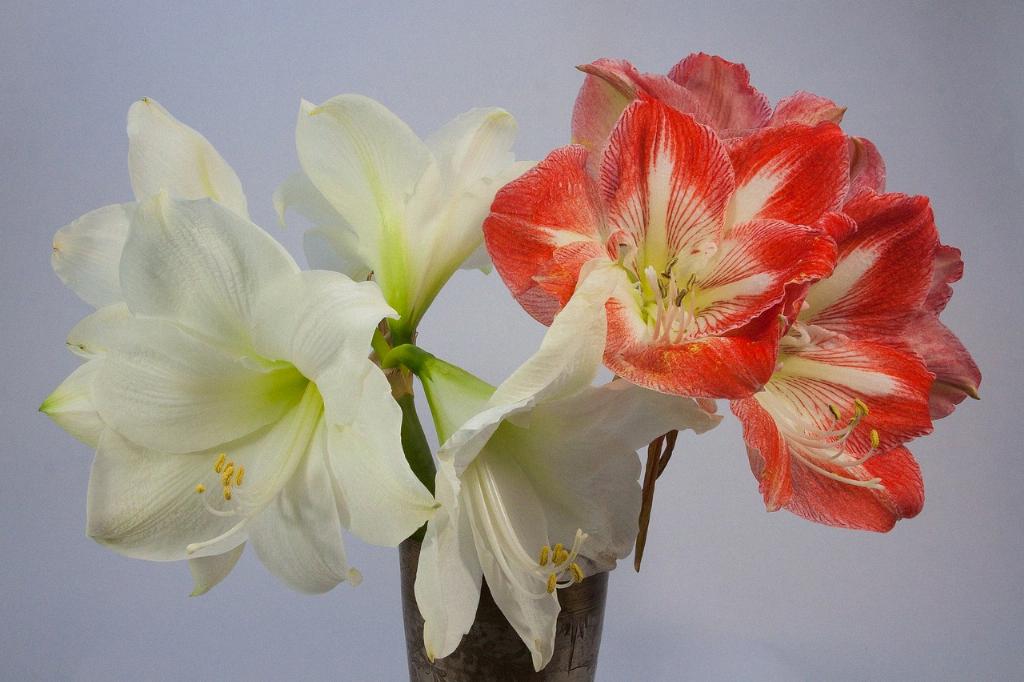If you’re wondering whether amaryllis bulbs can be planted outside, the answer is yes, they can. In USDA hardiness zones 8 through 10, you have the opportunity to grow these stunning flowers in an outdoor garden setting. With proper care and attention, you can enjoy the beauty of amaryllis blooms right in your own backyard.
Choosing the Right Location
When planting amaryllis bulbs outside, it’s essential to select a suitable location. These plants thrive in fertile, well-drained soil. Look for a spot in your garden that receives plenty of sunlight, as amaryllis bulbs love the warmth and light.
Timing is Key
For successful outdoor planting, wait until the soil temperature reaches 70 degrees Fahrenheit or higher. This ensures that the bulbs have the ideal conditions they need to grow and flourish. Make sure to plant the bulbs at the right time to give them the best start.
Climate Considerations
As a tropical plant, amaryllis thrives in warm climates. If you live in an area with cold winters, you may need to take extra precautions to protect the bulbs from frost. Consider planting them in containers that can be brought indoors during colder months.
Preparing the Soil
Before planting your amaryllis bulbs, prepare the soil by ensuring it is nutrient-rich and well-drained. Incorporate compost or organic matter to improve soil quality and provide the bulbs with the essential nutrients they need to grow strong and healthy.
Planting the Bulbs
When planting amaryllis bulbs outside, make sure to place them at the proper depth and spacing. Follow the instructions provided with the bulbs to ensure they are planted correctly. Give each bulb enough room to grow and develop its roots.
Watering and Maintenance
Once planted, it’s crucial to water your amaryllis bulbs regularly, especially during the growing season. Keep the soil moist but not waterlogged to prevent rot. Additionally, remove any dead foliage and flowers to encourage new growth.
Fertilizing Tips
To promote healthy growth and vibrant blooms, consider fertilizing your amaryllis bulbs throughout the growing season. Choose a fertilizer specifically formulated for flowering plants and follow the instructions for application to avoid overfeeding.
Staking and Support
As amaryllis plants grow tall and produce large blooms, they may require staking for support. Use stakes or trellises to help keep the stems upright and prevent them from bending or breaking under the weight of the flowers.
Overwintering Considerations
If you live in a colder climate, you may need to bring your amaryllis bulbs indoors during the winter months. Store them in a cool, dark place and reduce watering to allow the bulbs to go dormant. In the spring, you can reintroduce them to the outdoors.
Pest and Disease Management
Keep an eye out for common pests and diseases that may affect your amaryllis bulbs when planted outside. Look for signs of infestation or damage, such as yellowing leaves or wilted flowers, and take appropriate measures to address the issue promptly.
Enjoying the Blooms
With proper care and attention, your outdoor amaryllis bulbs will reward you with stunning blooms that brighten up your garden. Take the time to appreciate the beauty of these flowers and enjoy the fruits of your labor in creating a vibrant outdoor space.

Conclusion
In conclusion, planting amaryllis bulbs outside is a rewarding experience that allows you to enjoy the beauty of these flowers in a natural garden setting. By following the tips and guidelines outlined above, you can successfully grow amaryllis outdoors and create a colorful and thriving garden display.
